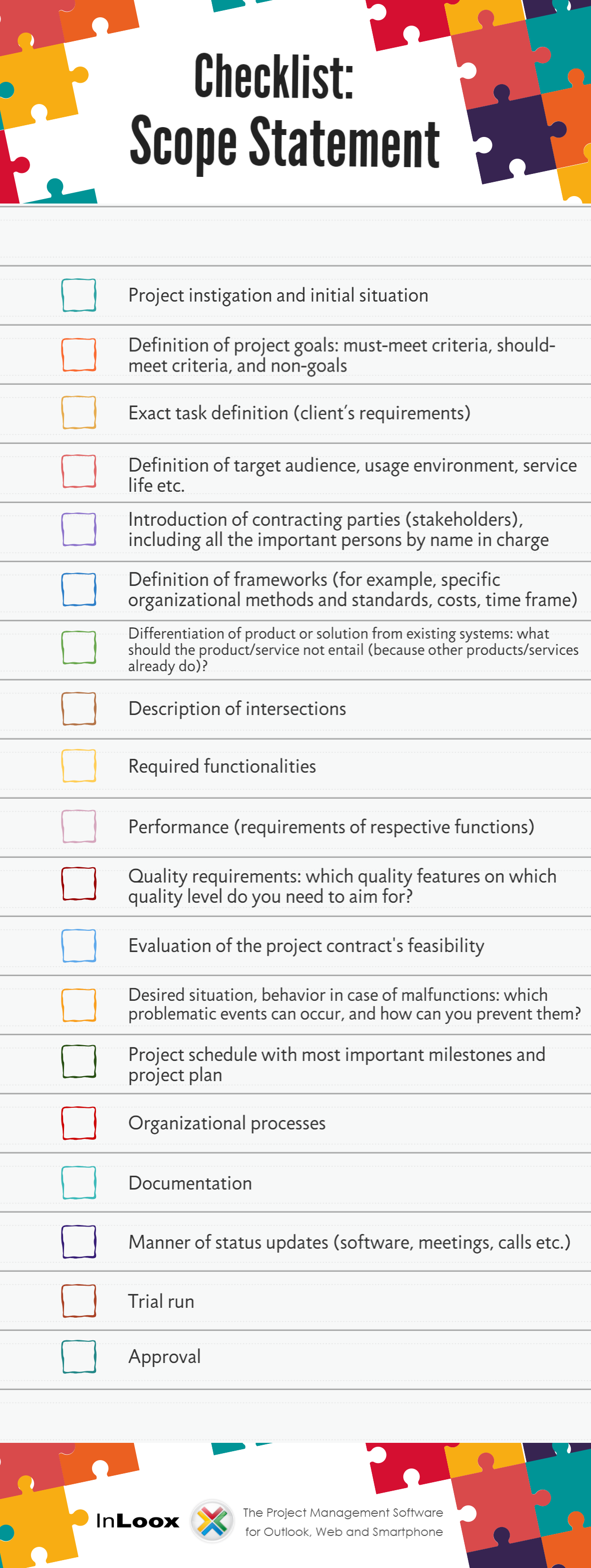“Unclear project contract“, “fuzzy project goals” or just a simple “we’ve completely talked past each other” – a lot of times a project is missing an important foundation for its success from the very beginning: a clear scope specification, which functions as an essential guideline throughout the progress of the project. Client and contractor should both be clear about what they expect from each other and clearly define what they consider a successful project completion.
Check List: Project Scope Statement
Linh Tran, Monday 18 January 2016 | Reading time: unknownYou should work with scope and requirement specification statements – even in times of agile project management. But what does that entail exactly, and how should a good scope statement look like?
Requirement Specification
The requirement specification statement or document is exactly that: it specifies what the client requires from the product or service and what deliverables they require from the contractor.
Scope Statement
The scope statement is the reply to the requirement specification, i.e. it describes how to actually implement the client’s requirements.
Requirement and scope statements are an important basis for the successful collaboration between the client and the project manager. It helps avoid misunderstandings which can easily arise, for example, when both sides are from different industries.
Scope statement – the contractor’s plan
The basis for the scope statement is always the requirements document which you should insist on getting from a client. It can be helpful to have a template questionnaire for the client, which specifies all necessary information for a successful project completion.
As the creation of a scope statement comes with a financial and personnel effort, you need to clarify these issues beforehand:
- Issuing of a scope statement
- Setting the general framework for the scope statement (costs, technical and organizational frames)
- Determination of the scope statement’s content
These points need to be in a scope statement:
- Project instigation and initial situation
- Definition of project goals: must-meet criteria, should-meet criteria, and non-goals
- Exact task definition (client’s requirements)
- Definition of target audience, usage environment, service life etc.
- Introduction of contracting parties (stakeholders), including all the important persons by name in charge
- Definition of frameworks (for example, specific organizational methods and standards, costs, time frame)
- Differentiation of product or solution from existing systems: what should the product/service not entail (because other products/services already do)?
- Description of intersections
- Required functionalities
- Performance (requirements of respective functions)
- Quality requirements: which quality features on which quality level do you need to aim for?
- Evaluation of the project contract’s feasibility
- Desired situation, behavior in case of malfunctions: which problematic events can occur, and how can you prevent them?
- Project schedule with most important milestones and project plan
- Organizational processes
- Documentation
- Manner of status updates (software, meetings, calls etc.)
- Trial run
- Approval
The scope statement is often part of the contract between the client and the contractor. In these cases, you should get it checked legally to avoid unpleasant surprises if a legal dispute should ever arise.
In any case, it’s worth investing in a scope and requirement statement to communicate goals and expectations better and to create a stable foundation for project success.
Share this Image On Your Site
(Text by Sabine Pfleger, translated by Linh Tran)

